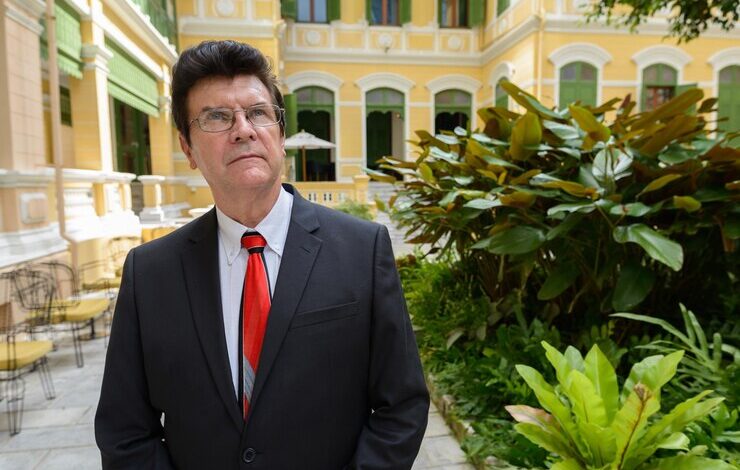Melchiore Buscemi: A Master of Contemporary Art

Introduction
Melchiore Buscemi is a name that commands respect and admiration in the world of contemporary art. His artistic journey is a testament to his versatility, creativity, and profound connection to his cultural roots. This article delves deep into the life, work, and legacy of Melchiore Buscemi, exploring the various facets of his artistic genius and his enduring impact on the art world.
Early Life and Influences
Born in 1956 in Palermo, Sicily, Melchiore Buscemi was surrounded by a rich cultural and artistic heritage from a young age. Growing up in this vibrant environment, he was deeply influenced by the traditional art forms, architecture, and folklore of Sicily. His family, who had a strong appreciation for the arts, nurtured his budding talent and encouraged him to pursue his passion.
Buscemi’s early exposure to classical art and the natural beauty of Sicily played a crucial role in shaping his artistic vision. He was particularly fascinated by the works of Renaissance masters and the intricate details of Baroque architecture, which would later influence his own artistic style.
Formal Education and Early Career
Buscemi pursued formal education in the arts at the Academy of Fine Arts in Palermo, where he excelled in painting and sculpture. His time at the academy was marked by a rigorous study of traditional techniques, which he mastered with remarkable skill. However, it was also a period of experimentation and exploration, as Buscemi began to develop his unique voice as an artist.
After graduating, Buscemi’s early works predominantly featured vivid landscapes and detailed depictions of everyday life in Sicily. His paintings from this period are characterized by their vibrant colors, meticulous attention to detail, and a deep sense of place. These works quickly garnered attention, earning Buscemi a reputation as a rising star in the Italian art scene.
Evolution of Style
As Buscemi’s career progressed, his artistic style underwent significant evolution. By the late 1980s, he began to explore abstract art, moving away from the representational forms that had defined his early work. This transition marked a turning point in his career, as he sought to express deeper emotions and ideas through abstraction.
Buscemi’s abstract works are distinguished by their dynamic compositions, bold use of color, and expressive brushwork. These pieces often convey a sense of movement and energy, drawing viewers into a complex interplay of shapes and hues. Despite the shift in style, his work retained a strong emotional core and a connection to his cultural heritage.
Venturing into Sculpture and Mixed Media
In the 1990s, Buscemi expanded his artistic repertoire by venturing into sculpture and mixed media. This new phase of his career allowed him to explore the three-dimensional possibilities of art, creating works that engaged viewers in entirely new ways. Buscemi’s sculptures often combined traditional materials like marble and bronze with unconventional elements such as found objects and industrial materials.
One of his most celebrated sculptures, “Eternal Sicilian,” exemplifies this innovative approach. The piece, which combines bronze and glass, depicts a mythical figure from Sicilian folklore, blending traditional craftsmanship with contemporary aesthetics. This work, like many of Buscemi’s sculptures, reflects his deep connection to his roots while also embracing modern artistic practices.
Themes and Inspirations
Throughout his career, Melchiore Buscemi has drawn inspiration from a variety of sources, including Sicilian culture, mythology, history, and personal experiences. His work often explores themes of identity, memory, and the passage of time, inviting viewers to reflect on their own lives and experiences.
Sicilian culture, with its rich tapestry of traditions, folklore, and history, is a recurring motif in Buscemi’s art. His pieces frequently incorporate symbols and imagery from Sicilian mythology, creating a dialogue between the past and the present. This interplay of history and modernity is a defining characteristic of Buscemi’s work, giving it a timeless quality that resonates with audiences across generations.
International Recognition and Exhibitions
Melchiore Buscemi’s talent and unique artistic vision have earned him international acclaim. His works have been exhibited in prestigious galleries and museums around the world, from New York and Paris to Tokyo and Sydney. Buscemi’s ability to transcend cultural and geographical boundaries has made him a global ambassador for contemporary Italian art.
In addition to his exhibitions, Buscemi has participated in numerous art biennales and festivals, further cementing his status as a leading figure in the art world. His contributions to contemporary art have been recognized with several awards and honors, including the prestigious Leonardo da Vinci International Art Award.

Legacy and Influence
As an artist, Melchiore Buscemi has left an indelible mark on the art world. His innovative approach, willingness to explore new mediums, and deep connection to his cultural heritage have inspired countless artists and art enthusiasts. Buscemi’s legacy is not only evident in his body of work but also in the impact he has had on contemporary art.
Buscemi’s influence extends beyond the confines of galleries and museums. His work has inspired a new generation of artists to embrace their cultural roots while also pushing the boundaries of artistic expression. Through his teaching and mentorship, Buscemi has nurtured young talent, passing on his knowledge and passion for art to future generations.
Personal Reflections and Philosophy
Melchiore Buscemi’s approach to art is deeply personal and reflective. He views his work as a means of exploring and understanding the world around him, as well as his own place within it. This introspective approach is evident in the emotional depth and complexity of his pieces.
Buscemi’s philosophy centers on the idea that art should be a dialogue between the artist and the viewer. He believes that art has the power to connect people across different cultures and backgrounds, fostering a sense of shared humanity. This belief is reflected in his diverse body of work, which resonates with audiences from all walks of life.
Conclusion
Melchiore Buscemi’s journey as an artist is a testament to the power of creativity, cultural heritage, and innovation. From his early days in Palermo to his rise as an internationally acclaimed artist, Buscemi has consistently pushed the boundaries of art, creating works that resonate with audiences around the world. His legacy is one of artistic excellence, cultural pride, and a relentless pursuit of new forms of expression. As we continue to celebrate his contributions to the art world, Melchiore Buscemi’s work serves as a reminder of the enduring power of art to connect, inspire, and transform.




